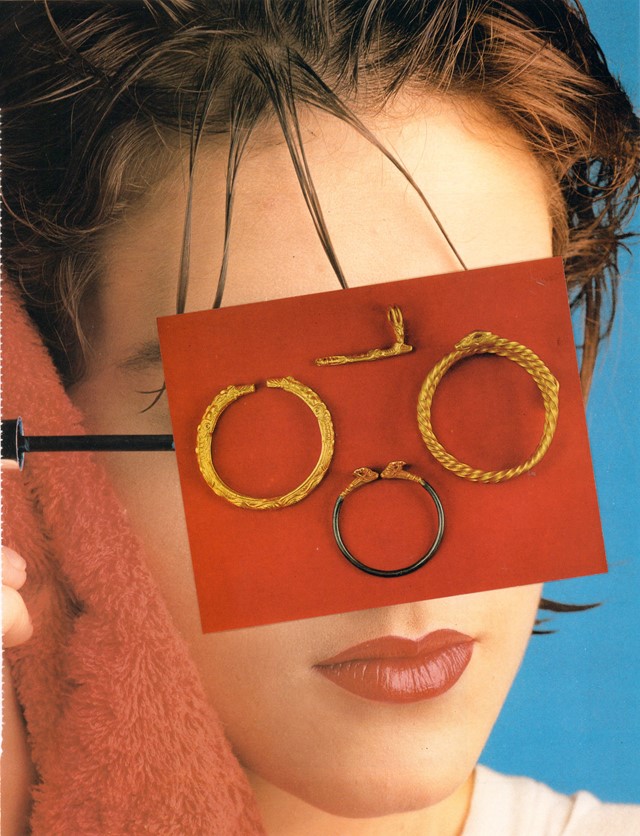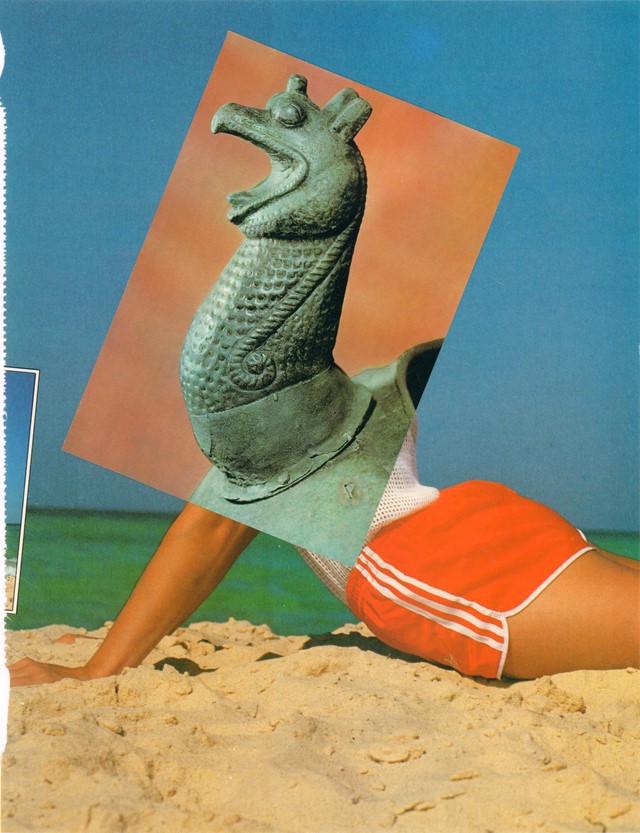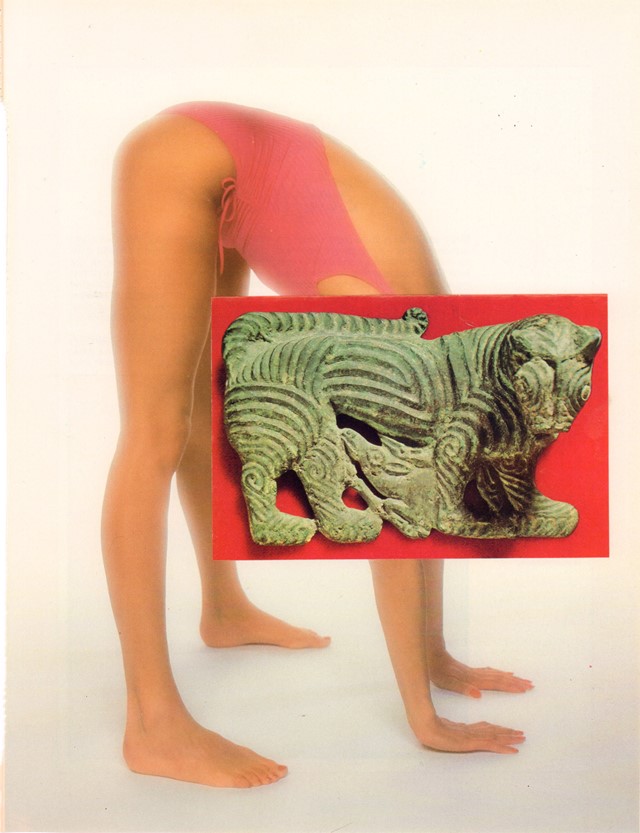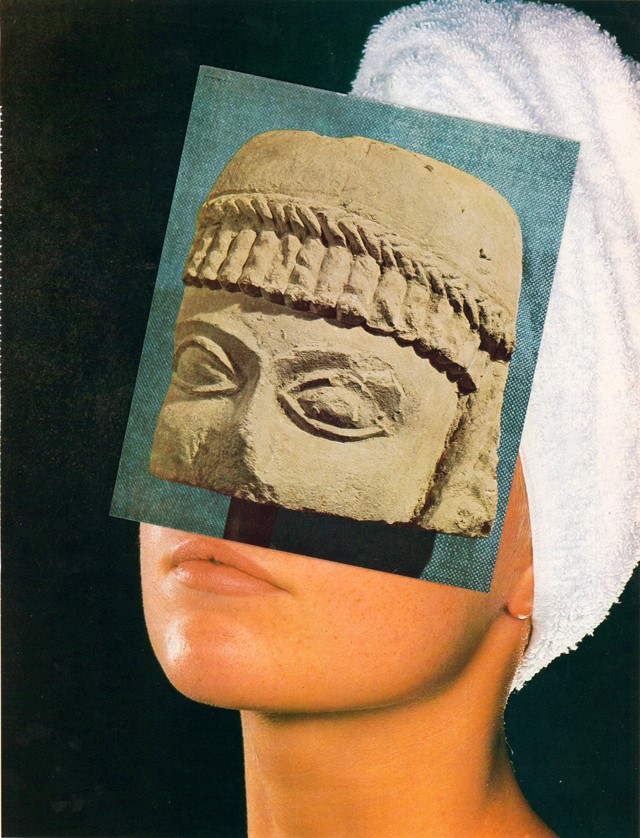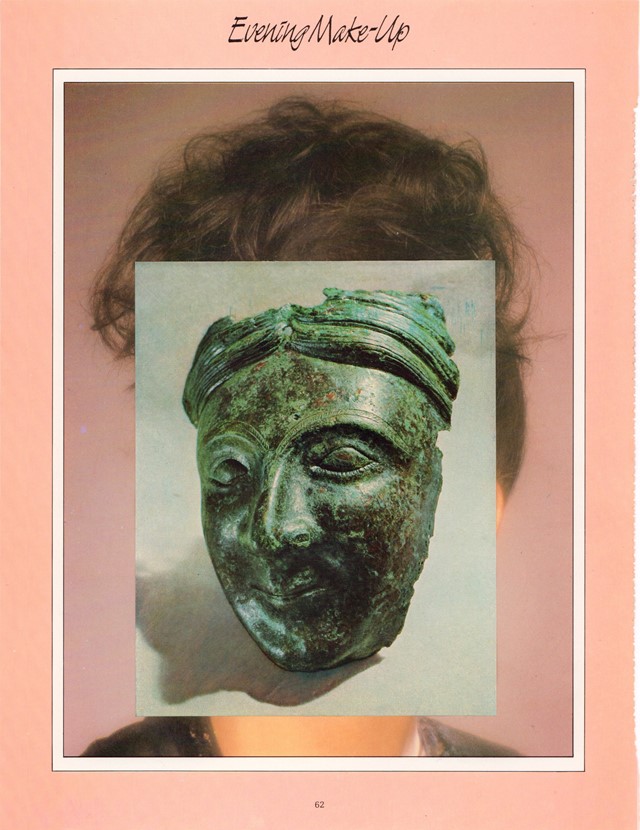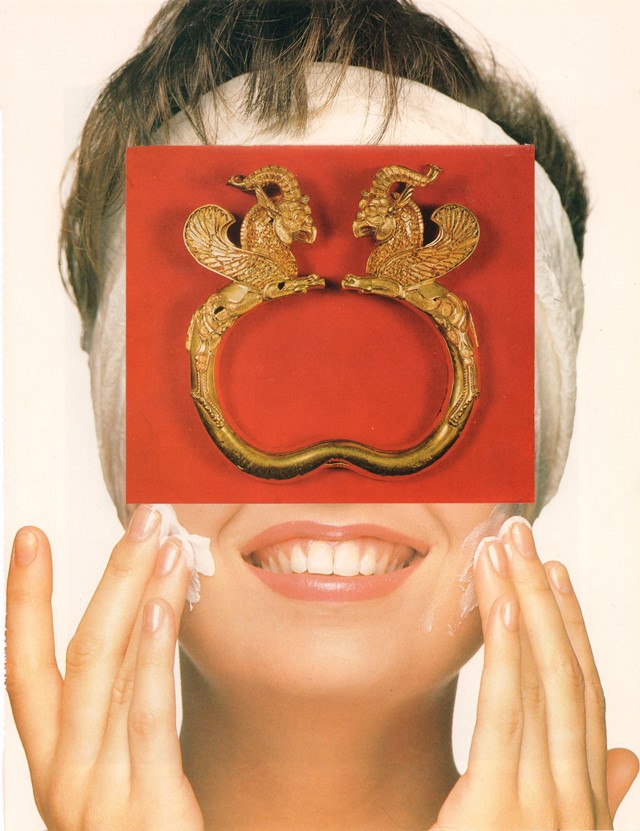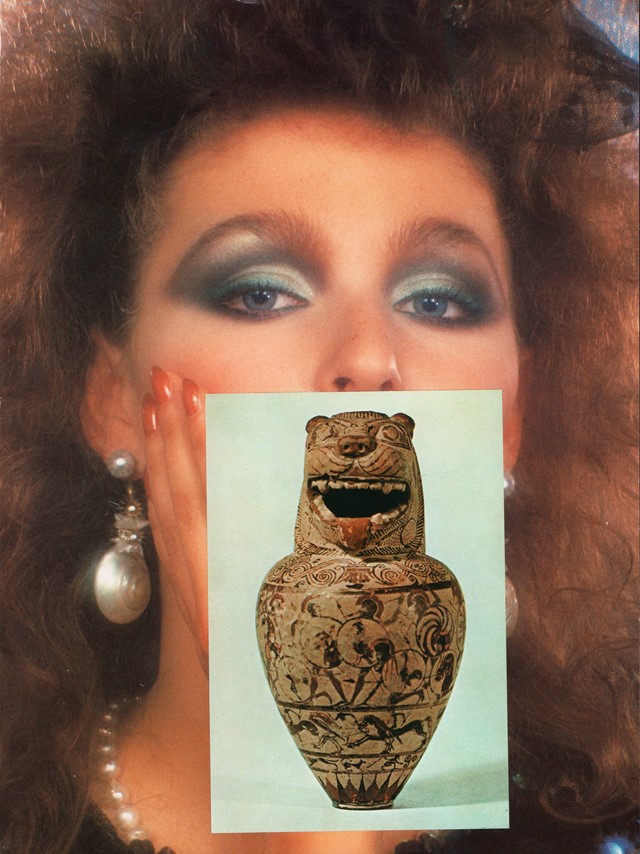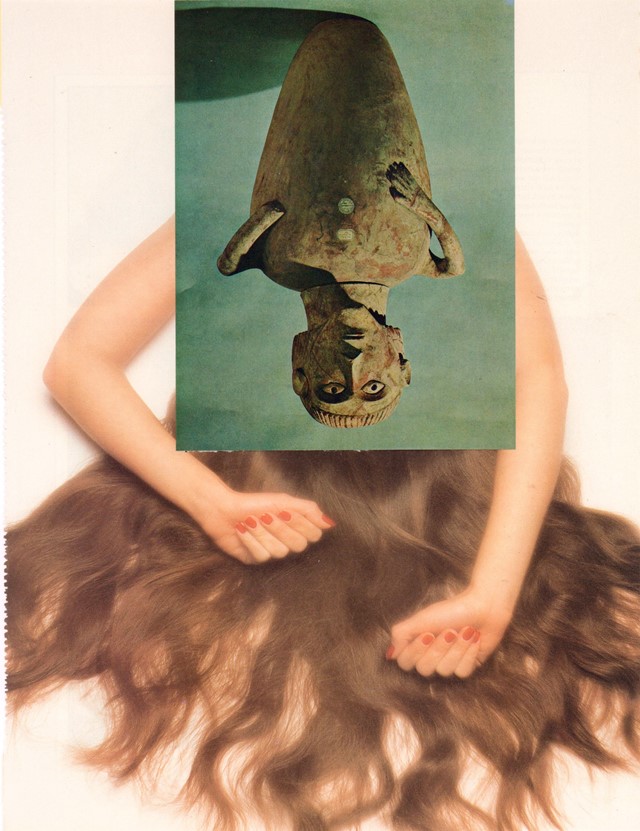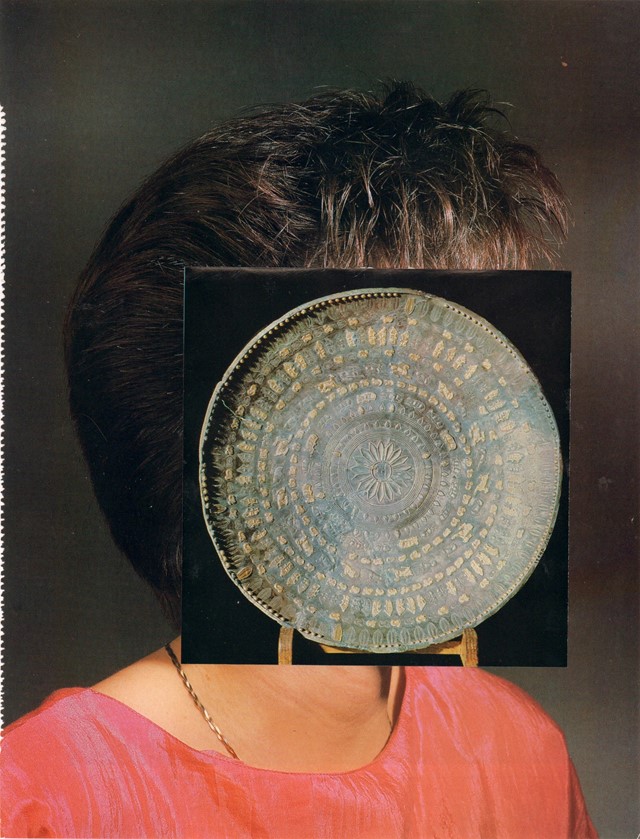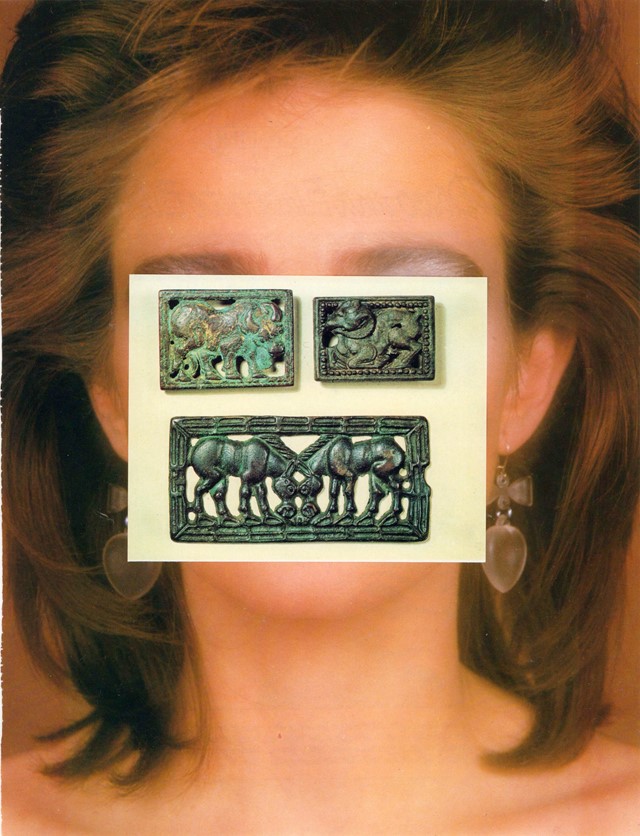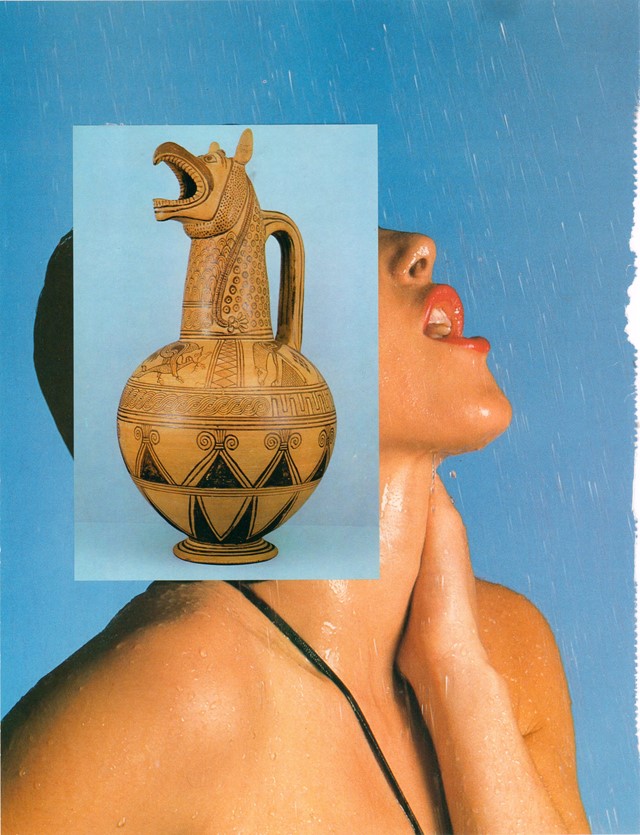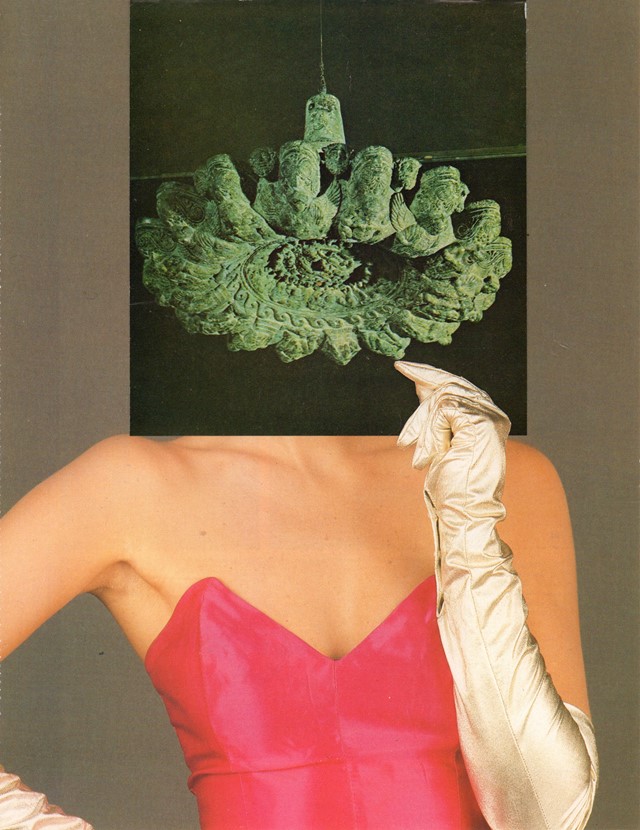London-based artist James Springall’s new collage series, The Ancient Art of Beauty, combines two periods of time which are as different as they are compelling. Spreads from 1980s beauty magazines form the background of these pieces, boasting strong poses, glossy golden skin, voluminous hair and plenty of eyeshadow – but pasted over them, fragments of ancient sculptures, accessories, totems and figures sit at perfect junctures, creating collages that are hilarious and poignant in equal abundance.
The idea stems from extensive literary research, Springall writes: “I found some incredible old books: one on the birth of Greek art, one on Etruscan and early Roman art, and another on the art of the Steppes. Some time later I picked up another book that’s essentially a guide to being beautiful. The blurb on the inside sleeve read: ‘Beauty may only be skin-deep, but it’s a quality we strive almost ceaselessly to attain – and maintain.’ That struck me as being quite brutal!” It was the striking juxtaposition of these two tomes that started Springall thinking about beauty and its changing role from ancient times until today. “Thousands of years ago, these nomadic tribes were striving to make beautiful objects, and here we are, still obsessed with the notion of beauty,” he says. “I wanted to trace a line between these two worlds and see if they could live together.”
He continues: “We’re constantly bombarded with interpretations of what beauty is, and my aim here is to highlight – and gently poke fun at – our fixation with it; to point out that we shouldn’t get too hung up about trying to attain any particular definition of it.” Springall’s objective has most definitely been fulfilled; the images radiate irreverence, but without feeling farcical. Perhaps this is due to the use of beauty shots from the 80s, a time in which, as he points out, “beauty could suddenly be powerful in a different way: not just in the traditional sense, but also in a more androgynous, masculine, and unexpected way.” And unexpected beauty is exactly what The Ancient Art of Beauty achieves.
